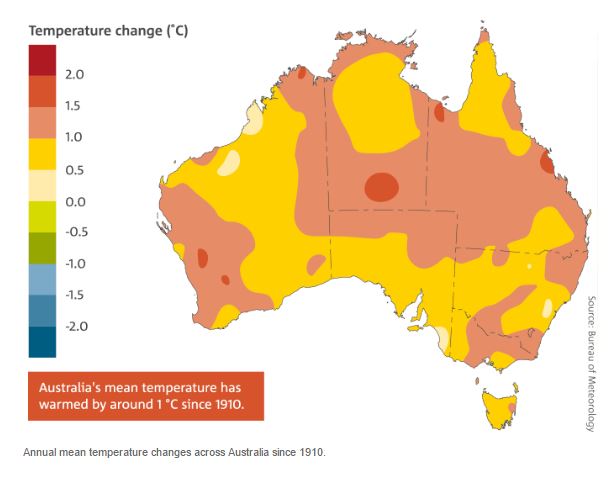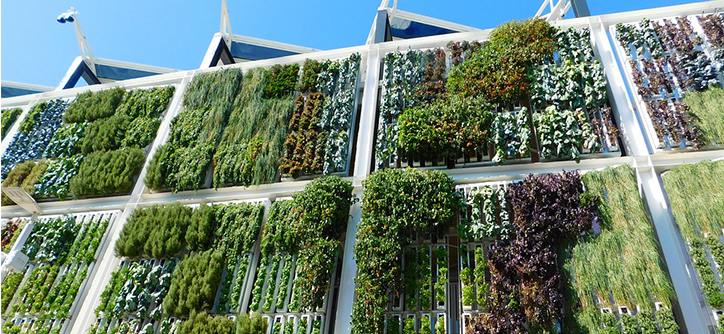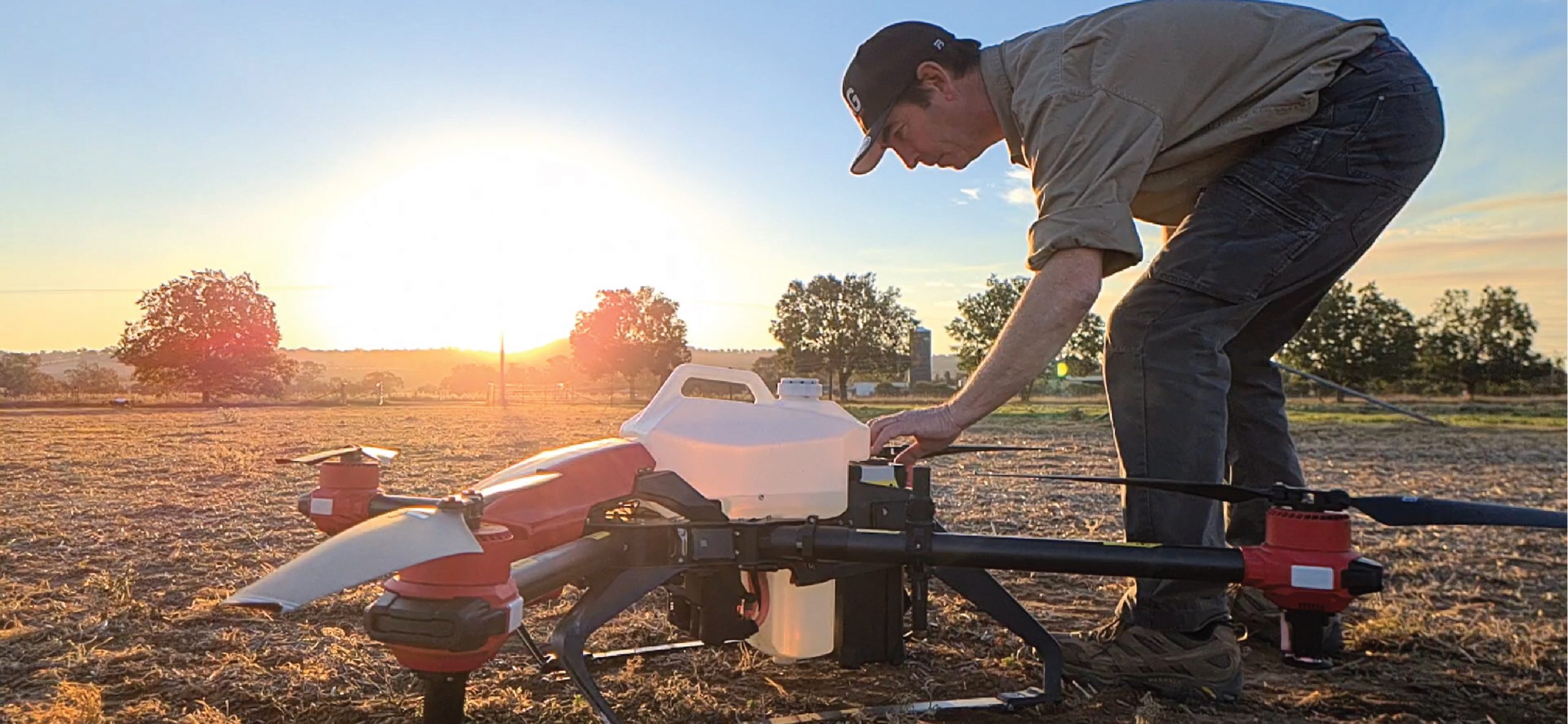With a total area of 445 million hectares committed to all types of agriculture in Australia, the gross value of farm production is forecast to reach a new record of $63.18 billion in 2016/17 financial year.
It’s clear that the impact of agriculture on the Australian economy is huge, and it is important to anticipate larger trends that are going to re-shape the market.
Here’s a list of the 5 megatrends shaping Australian Agriculture:
1. Climate
The climatologists tell us the country is getting hotter , approximately 1 degree on average across the country since 1910 (as per figure 1 from the Bureau of Meteorology (BOM)).
 Figure 1. Australia’s mean temperature increase since 1910, BOM
Figure 1. Australia’s mean temperature increase since 1910, BOM
 Figure 2. Australia’s total rainfall Trend map (1970-2015, mm/10 yr), BOM
Figure 2. Australia’s total rainfall Trend map (1970-2015, mm/10 yr), BOM
Total rainfall trends are also generally increasing in the North-West and a few other pockets but decreasing elsewhere (see the bureau’s website under the menu ‘’climate variability and change’’ for rainfall trends across the four seasons to see seasonal trends affecting sowing times, in crop rainfall, harvest etc. given these trends may be more relevant to you).
With increasing temperature and diminished rainfall reducing potential plant yields, it’s a credit to growers that outputs are still increasing.
2. Changing ownership structure and increasing farm sizes
According to Land Commodities from 2005-06 to 2009-10 the total number of agricultural enterprises decreased by 13% from 154,000 to 134,000; as 20,000 smaller farms were absorbed by their larger counterparts . This land aggregation has allowed greater economies of size as the owner has been able to achieve volume discounts on inputs and also produce more with his/her labour using larger/more specialized machinery (driving down average costs per unit of production). The trick is to not overcapitalize on machinery, hence the prevalence of contract harvesters or contractors in general. The flipside can be a loss in flexibility in timing of operations as well the need to enforce biosecurity protocols regarding weeds, pests and diseases.
3. New technologies
Broadacre farming has seen the greatest adoption of precision agriculture (PA). Things started off with GPS guidance of spraying/sowing etc. and moved forward into yield mapping at harvest and onto electromagnetic conductivity surveys.
Attention is now also being given to the use of in crop sensors such as Greenseeker, OptRx and CropSpec to determine crop biomass and colour in order to vary fertiliser inputs during the growing season. The benefits of PA are certainly not limited to broadacre with increasing levels of adoption in crops like sugarcane, bananas, as well as other tree and vine crops.
Improvements in solar panels and battery storage by companies like Tesla, Evergen etc. will eventually see electricity costs off grid become cheaper than that from coal-fired power stations which will be of great benefit for those involved in large scale irrigation. According to the Climate Council this situation already exists in northern locations with high sunshine hours.
Vertical farming is taking off where land resources are very scarce such as in highly populated places like Singapore, but this may also be a fit for Australia as a means of conserving resources like water and nutrients. Some growers are using a symbiotic system with edible fish (aquaponics) whereby the fish waste provides nutrients for the plants, there are also hydroponic and bioponic techniques used.
 Figure 3. Aquaponics
Figure 3. Aquaponics
4. Changing consumption/Increasing customer awareness
With the ever increasing rates of food fraud globally, paddock to plate tracing is becoming increasingly important (especially for Chinese consumers wanting to know the premium they paid for Australian produce delivers them the real deal and not counterfeit produce). To help this cause Australian Post, Alibaba (biggest e-commerce company in the world) and Blackmores have entered into a supply chain agreement to increase traceability from the producer to the consumer, mapping where food was grown and its journey right across the supply chain into destinations such as China and South-East Asia in particular.
Aglive, with support from the MLA have developed an eNVD app, making it easier for livestock producers to prove traceability of livestock from farm to stockyard/abattoir etc. and beyond.
5. Increasing environmental safeguards and legislation
Everyone desires clean air, water and soil free from pollution and Australia with its low population and good agricultural practice can provide produce safe to eat with almost negligible residues, as well as a healthy and sustainable environment. However to help achieve this, federal and state governments are periodically upping the ante on growers with regard to new legislation designed to lower fertiliser and pesticide levels in water catchments, especially cane farms adjacent to the barrier reef lagoon. In fact it’s not always the club approach; in the Burdekin region there is $700,000 in grants available to cane growers to adopt new and existing innovations to help reduce nutrient losses from their farms into the reef catchments, see the NQ Dry Tropics website for details.
There is of course regulation regarding chemical user training, avoidance of chemical trespass off target through product label restraints, record keeping requirements, the keeping of registers for hazardous chemicals and the list goes on.




